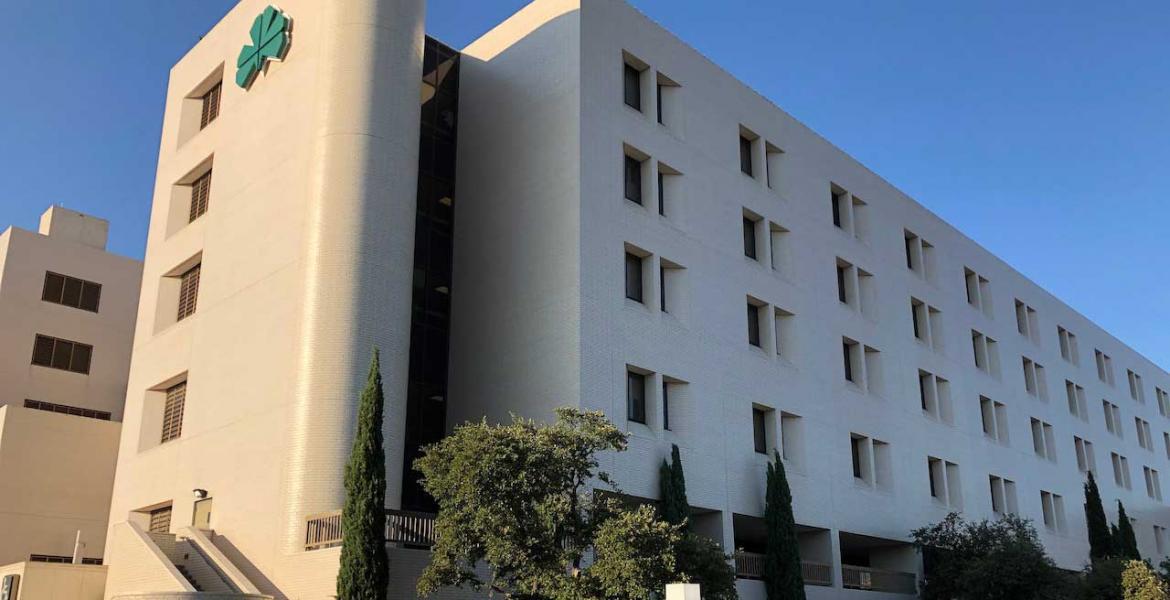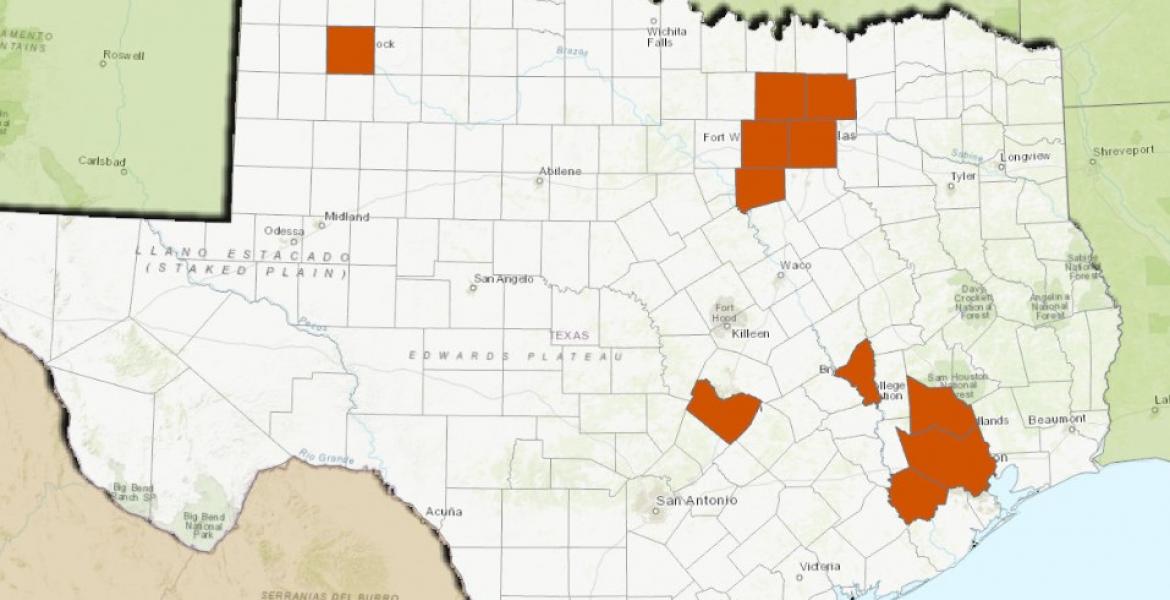BRYAN-COLLEGE STATION, TX — The simple act of blowing through a straw could soon come to symbolize a breathtaking leap forward in the COVID-19 fight – and in combating other public health threats, including pathogens that could cause future pandemics.
That simple exhaled breath is key to a new device that uses artificial intelligence (AI) to detect whether individuals should be tested for COVID-19. The sophisticated breathalyzer is being developed and tested through a collaboration among a Dallas-based company, Worlds Inc., the U.S. Air Force and The Texas A&M University System.
Called Worlds Protect, the device takes the form of a kiosk where a person uses a disposable straw to blow into a copper inlet. In less than a minute, test results can be sent to the person’s smartphone.
Worlds Inc. co-founders Dave Copps and Chris Rohde envision Worlds Protect kiosks being placed outside of factories, schools, military bases — anywhere large groups of people need to be screened for COVID-19 or other infectious diseases.
“People can walk up and, literally, just breathe into the device,” said Rohde, president of Worlds Inc. “It's completely noninvasive. There's no amount of touching. And you quickly get a result. You get a yay or nay.”
The Texas A&M System has invested $1 million in the project’s development. It is assisting Worlds Inc. with engineering and design, prototype building and the mapping of a commercial manufacturing process. Five prototypes will be tried out this fall on the Texas A&M campus.
“Getting tech innovations to market is one of our sweet spots,” said John Sharp, chancellor of the Texas A&M System. “This breakthrough could have lasting impact on global public health.”
One of the prototypes was set up Thursday on the Texas A&M campus to test students and others. Aggies will be tested using both Worlds Protect and polymerase chain reaction (PCR) tests. Results will be compared to test the accuracy of Worlds Protect and refine its system.
More than 800 individuals have been tested with Worlds Protect already at Wright-Patterson Air Force Base in Ohio and Brigham Young University (BYU). Results so far suggest that the accuracy of Worlds Protect is comparable to PCR tests, which are considered the best type of test available for diagnosing COVID-19.
“By applying AI, we are able to achieve a high level of accuracy and improve every day as more results are analyzed," said Copps, CEO of Worlds Inc. “We are using PCR tests as our yardstick to see and understand our progress.”
Copps and Rohde are working with the Food and Drug Administration to obtain Emergency Use Authorization, that eventually could allow Worlds Protect to become an alternative to PCR tests.
Texas A&M System experts are involved from the Texas A&M College of Engineering, the Texas A&M Engineering Experiment Station and the SecureAmerica Institute, an organization headquartered on the RELLIS Campus that assists with high-tech manufacturing.
Rob Gorham, executive director of SecureAmerica, said the Texas A&M System specializes in helping businesses like Worlds Inc. get through the so-called “valley of death” between an invention and commercial viability.
“There's a lot of work that has to happen,” Gorham said. “You have to think about standards. You have to actually be able to rapidly and with agility circulate your design as well as think through all of the different supply-chain requirements.”
Inside the Worlds Protect kiosk, a person’s breath is examined for the specific volatile organic compounds that are generated by the body when someone is fighting the virus. The test is done with advanced mass spectrometry technology, a chemical analysis made smarter by AI. Worlds Inc. uses AI software to map the chemical code of a body reacting to the infection.
The copper inlet and other key interior elements are heated between each breath to clean and sanitize the device so one individual test does not contaminate another individual test.
Dr. Guido Verbeck, a doctoral graduate of Texas A&M, has developed the device’s key technology.
Verbeck, a University of North Texas chemistry professor, has worked with Worlds Inc. software engineers since March. He is a widely known expert on innovative uses of mass spectrometry. His peer-reviewed research on using mass spectrometry to detect COVID-19 was accepted and published recently by the Royal Society of Chemistry.
Dr. David Staack, associate professor of mechanical engineering at Texas A&M, has partnered with Worlds Inc. on the development of the breath-capture system for the device. The system controls the variables in how people breathe so that the chemical compounds related to COVID-19 are more easily identified by the mass spectrometry technology.
SecureAmerica is building additional Worlds Protect prototypes for demonstration at U.S Air Force bases and other Department of Defense locations, including Lackland Air Force Base in San Antonio, where the devices could help screen up to 900 airmen weekly who arrive for basic training.
Col. Charles Bris-Bois, leader of the Air Force Disruptive Technology Team at the Pentagon, will coordinate the screening of the airmen in Texas. He also helped arrange the device’s initial testing in Ohio and screening now underway at BYU.
Copps said additional device testing locations within Texas are also being discussed.
Worlds Protect software also could be engineered to detect other health problems, including future pandemics and bioterrorism threats.
“It is exciting for Texas A&M experts to be part of a project with so much potential,” Gorham said. “We could be saving people's lives, and allow the economy to come back because there's a way to detect COVID-19 rapidly. It means the world — literally.”
Subscribe to the LIVE! Daily
Required






Post a comment to this article here: